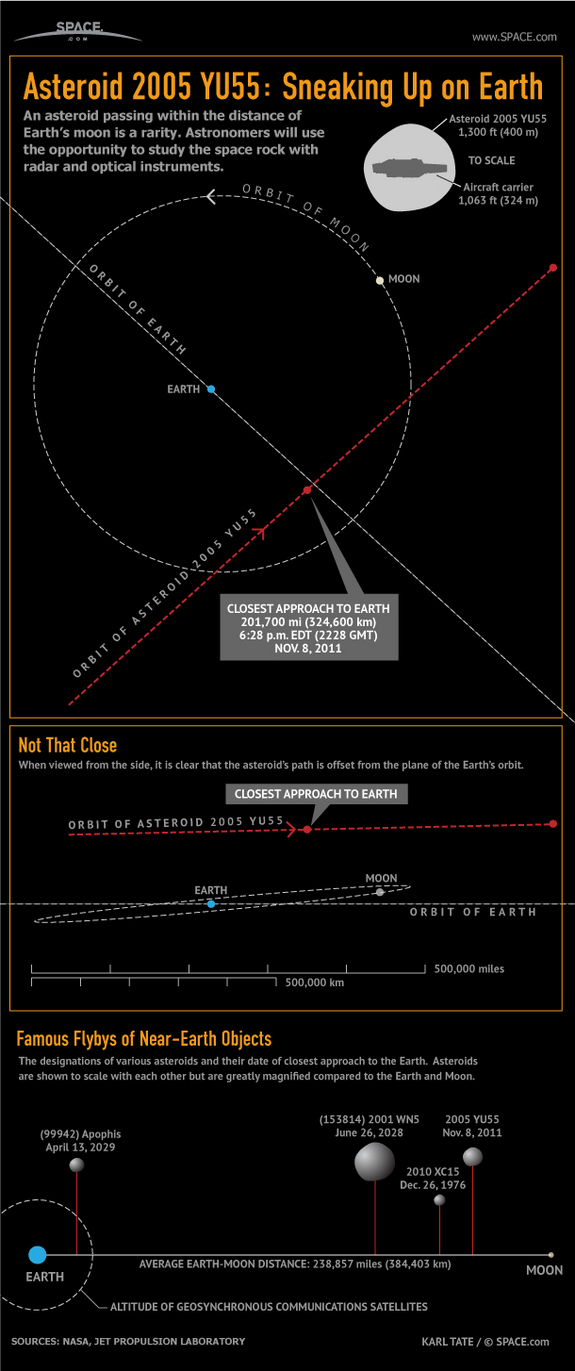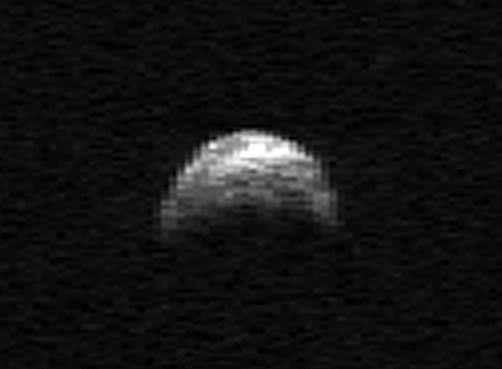NASA’s Jet Propulsion Laboratory released this video today featuring more information about the much-discussed 2005 YU55, a 400-meter-wide asteroid that will pass by Earth next Tuesday at a distance closer than the Moon. The video features research scientist Lance Benner, an expert in radio imaging of near-Earth objects.
While YU55 will come closer than any object we’ve been aware of in the past 35 years, it poses no risk to Earth.
“2005 YU55 cannot hit Earth, at least over the interval that we can compute the motion reliably, which extends for several hundred years.”
– Lance Benner, JPL Research Scientist
[/caption]
While we can’t state enough that there’s no danger from YU55, this close pass will offer a fantastic opportunity for scientists to acquire detailed radar images of this ancient C-type asteroid.
NASA’s Near-Earth Objects Observation Program will continue tracking YU55 using the 70-meter radar telescope at the Deep Space Network in Goldstone, California, as well as with the Arecibo Planetary Radar Facility in Puerto Rico.
“This is the closest approach by an asteroid this large that we’ve known about in advance,” said Benner. “The Goldstone telescope has a new radar imaging capability which has just become available that will enable us to see much finer detail than has previously been possible.”
Radar imaging allows scientists to better study the surface features and composition of fast-moving, dark objects like YU55 which reflect very little visible light.
Space.com has provided a great infographic that shows exactly where this asteroid will pass by Earth. Note that the side view plainly shows that the path of the asteroid is well above the plane of the Earth/Moon orbit.

Source: SPACE.com: All about our solar system, outer space and exploration
Video: JPL


